Content
Rotkäppchen sparkling wine
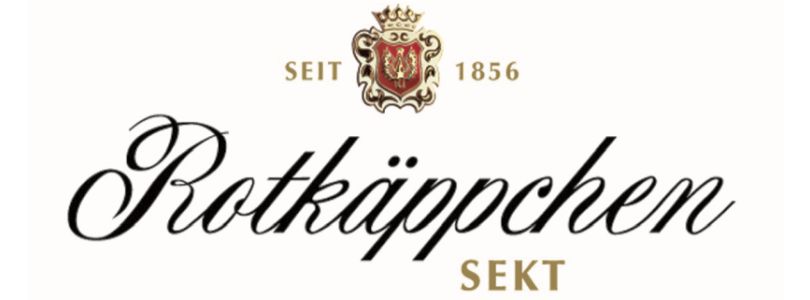
current "Rotkäppchen" logo
Red riding hood as eponym
On 26 September 1856, Moritz and Julius Kloss founded a wine trading company together with their friend Carl Foerster in the Saale-Unstrut wine-growing region. In 1858, the young businessmen from Freyburg expanded it into a champagne factory, because sparkling wine was the most profitable branch of the wine business at that time. The first bottles of a sparkling wine produced with the traditional method for producing champagne left the Kloss & Foerster winery. Like many of its competitors at that time, the winery opted for French-sounding brand names such as "Crémant Rose", "Lemartin Frères", "Sillery Grand Mousseux" or "Monopol".
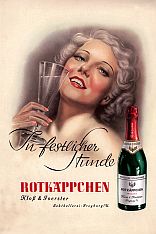
Nostalgic sign plate from around 1910
The introduction of the "Act on the Protection of Trade Marks" (Gesetz zum Schutz von Warenzeichen) of 12 May 1894 mobilised the competitors. The French champagne house Walbaum-Heidsieck took legal action to protect its “Monopole” trade mark, which had been in existence since 1846, and won the case. Only champagne from Heidsieck & Co. in Reims was still allowed to bear the name “Monopole”. This prompted the management in Freyburg to make the red cap of the Freyburg bottles of sparkling wine the eponym for the new trade mark, an allusion to the "Red Top" brand of the Heidsieck champagne house. The word mark DE 8311 "Rotkäppchen" (Little Red Riding Hood) applied for at the patent office on 20 February 1895 is still valid today.
Sparkling wine boom continues
In the years that followed, the sparkling wine from Freyburg enjoyed ever increasing popularity. The production figures rose, the company applied for further trade marks for sparkling wine at the Imperial Patent Office (Kaiserliches Patentamt) and as early as 1904 it was one of the ten largest sparkling wine producers in the German Empire. Rotkäppchen even came through the two world wars unscathed.
Expropriation after 1945: continuing as the state-owned enterprise VEB Rotkäppchen-Sektkellerei Freyburg/Unstrut
In 1945, the Kloss & Foerster sparkling wine cellars were placed under forced administration by the Soviet military administration and three years later the company was expropriated. As a result, the sparkling wine cellars became a state-owned enterprise and were henceforth called VEB Rotkäppchen-Sektkellerei Freyburg/Unstrut.
The dispossessed Günther Kloß moved to West Germany, where he re-founded the sparkling wine cellars Kloß & Foerster in Rüdesheim in 1952/53. In the East, the sparkling wine cellars in the idyllic town of Freyburg operated strictly according to plan. As early as 1957, they were producing around 600,000 bottles of sparkling wine per year as demand was growing.
Towards the end of the 1960s, the sparkling wine cellars set up a research and development department to improve the quality of their products. This was a great success: The VEB Rotkäppchen Sektkellerei became a model company in the GDR. In the 1980s, up to 38 different brands of sparkling wine were being produced every year, and sales reached 15 million bottles in 1987.
Rotkäppchen – the former GDR model company becomes the largest producer of sparkling wine and spirits in Germany
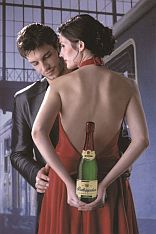
While Rotkäppchen sparkling wine was the market leader in the GDR, sales collapsed after German reunification in 1989 and the Rotkäppchen brand was in danger of disappearing. After the fall of the Berlin wall, the East Germans first tried out West German products. Under the leadership of the Treuhandanstalt (trust agency), the company was transformed into the limited liability company Rotkäppchen Sektkellerei GmbH in June 1990. Despite the critical situation, the company invested in new equipment and was made fit for the market economy. It did not have to wait long for success. In 1992, the company surpassed all expectations, selling 5.7 million bottles.
In 1993, the Treuhandanstalt decided to sell and privatise the company. By 1995, “Rotkäppchen Sekt” had become the best-selling sparkling wine in the eastern German Länder, and from 2001 this was true for the whole of Germany.
In 2002, the long-established Freyburg-based company took over the successful sparkling wine brands “Mumm”, “Jules Mumm” and “MM Extra” together with their production sites in Eltville and Hochheim am Rhein, and in 2003, Geldermann Privatsektkellerei GmbH in Breisach. This is how Germany’s largest producer of sparkling wine came into being –Rotkäppchen-Mumm Sektkellerei GmbH.
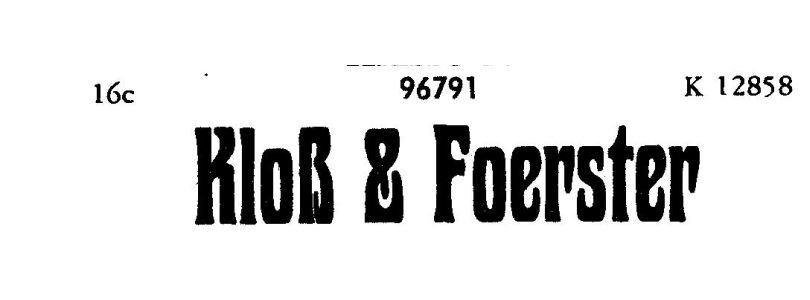
Trade mark DE96791 of 27 February 1907, trade mark registered
"Kloß & Foerster" returns to the Unstrut region
On 21 December 2005, 150 years after its foundation, the shareholders of Rotkäppchen-Mumm Sektkellereien bought the “Kloß & Foerster” trade mark.
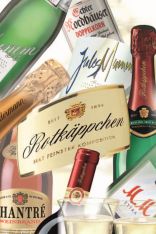
Thus the “Kloß & Foerster” trade mark returned to the Unstrut region, where the history of the company had once begun.
Rotkäppchen expands its trade mark portfolio
Pictures: Rotkäppchen-Mumm Sektkellerei GmbH
Last updated: 10 December 2025

Not only protecting innovations
Social Media